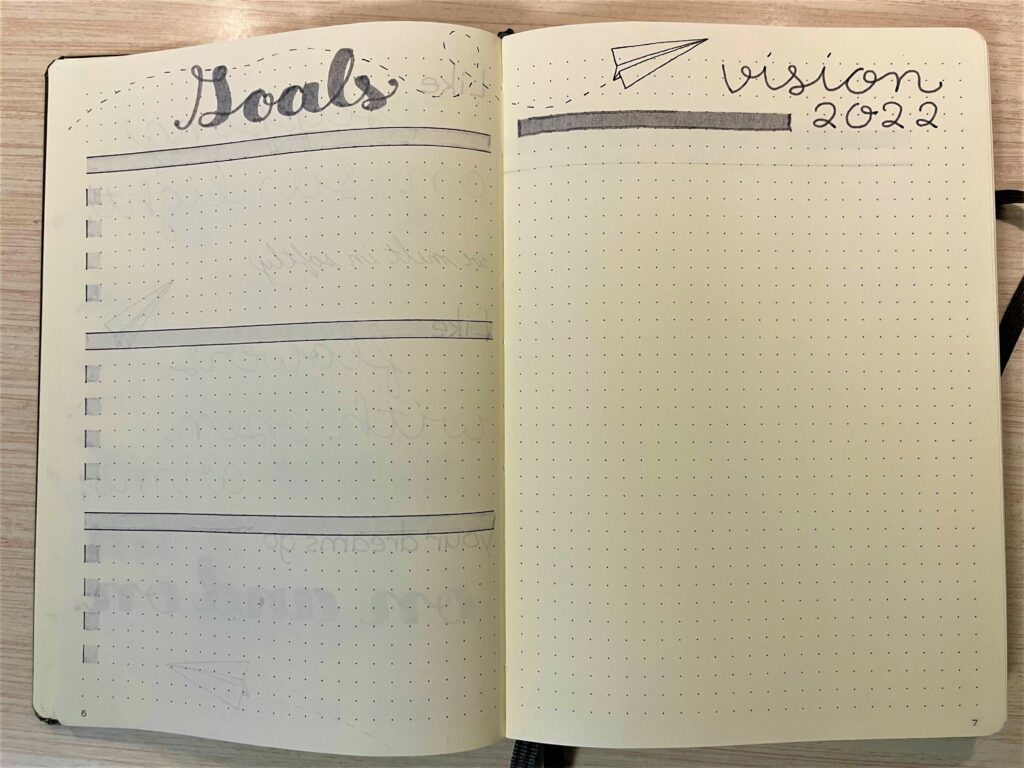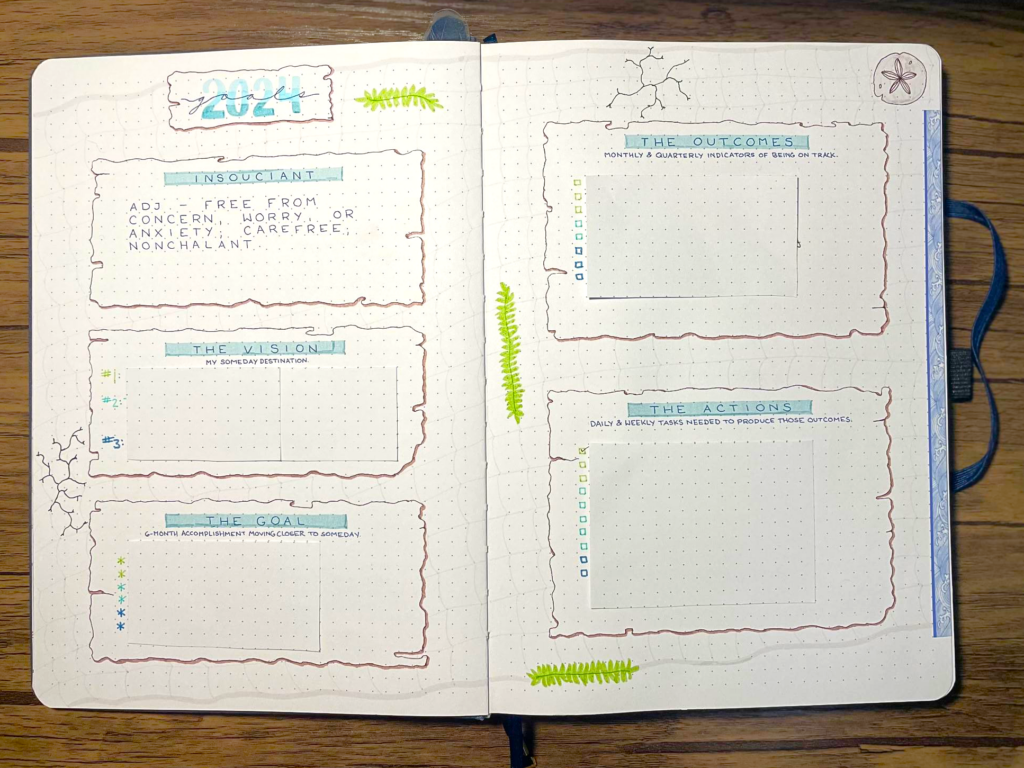Setting Short-Term Goals for Long-Term Planning
Have you found yourself setting the same goals over and over and never actually achieving them? Maybe you know exactly what you want to achieve in the long term, but you have no idea how to get there. Or maybe your yearly, semi-annual, or quarterly goal-setting process doesn’t account for long-term planning at all.
That’s exactly the sort of cycle I fell into. My short-term planning processes weren’t building toward my long-term goals, and sometimes what I labeled as short-term goals required way more time than I allotted to them.
So I went hunting for a better system. I overhauled my goal-setting process to be more strategic and focused, so I can set realistic expectations for myself and actually move forward.
Here’s how I’ve adjusted my six-month goal-setting system for better long-term planning.
The Old System: 3 Buckets

For almost as long as I’ve been bullet journaling, I’ve stuck to the same basic goal-setting system: what I’ll call the Three Bucket Method.
Every six months (so at the beginning of each new bullet journal), I chose three overarching goals. Then I broke those down into smaller tasks to accomplish throughout the six-month period.
In that most basic form, it’s a useful strategy for making large tasks manageable. But in practice, my Three Bucket Method didn’t function that way.
Usually, my three “goals” functioned more as goal categories (think “work,” “home,” and “health”). So instead of breaking down one specific goal into smaller sequential steps, I would simply list a bunch of semi-related tasks under each category.
Sometimes those tasks worked together to build toward a larger goal. Often, they didn’t. And often, I severely overestimated how much I could reasonably accomplish within six months.
As a result, I found myself writing down the same “goals” every six months. Then I was disappointed all over again when I wound up right back where I started six months later.
The Three Bucket Method, as I used it, made for quick and easy planning at the beginning of a new journal. But it had some serious limitations:
- It lacked direction. My intended outcomes were vague and outside the scope of the timeframe I assigned to them. Above all, I wasn’t building to anything except the small satisfaction of crossing a bunch of items off the list.
- It wasn’t designed for long-term planning. The system only allowed me to plan six months at a time. That meant if I had a goal I wasn’t sure I could accomplish within the six months, I had to either leave it off the list, arbitrarily trim it down, or (most often) write it down knowing it was unlikely to happen — setting myself up for failure.
- It eroded self-trust. The more I set goals I knew I probably couldn’t achieve, the more I found myself struggling to trust other promises I made to myself.
Something needed to change. I needed a long-term planning system that would help me rebuild self-trust and make progress in the short term while working toward larger goals.
The New System: Planning Backward

I adapted my new six-month goals system from the goal breakdown pages in the Sterling Ink Common Planner. (In the interest of full disclosure, I haven’t used this planner myself. I was simply inspired by the format, and adjusted it to suit my own needs in my bullet journal.)
Here’s how I structure my six-month goal spread now to accommodate both short- and long-term planning.
The Vision: My Someday Destination
Before I begin setting six-month goals, I take some time to think a few years into the future and picture the kind of life I want to be living then.
For simplicity’s sake, I actually draw from the Three Bucket Method here and choose three major categories to focus on. Then, for each category, I set one long-term goal I know I likely can’t achieve within six months.
In other words, this is the space to dream.
The Goals: 6-Month Accomplishments Moving Me Closer to Someday
Now it’s time to think short-term and achievable. In this step, I look at those long-term aspirations and ask myself: How much progress can I reasonably make towards turning these dreams into a reality within the next six months?
Then I set two or three concrete six-month goals for each category that will actively help me make progress toward the big someday destination.
That last part is the key to the whole system. Instead of only planning for six months (or a year, or a quarter, or however often you set new goals), we’re starting with the end in mind and working backward to design a short-term plan that directly supports the long-term dream.
For example, if the eventual dream is to become a published author, a reasonable and targeted six-month goal might be to write the first draft.
The Outcomes: Monthly & Quarterly Indicators of Staying on Track
Once I have my six-month goals nailed down, I continue working backward and breaking them down into smaller objectives. I like to think of these outcomes as projects — tasks with multiple steps that will take a few weeks or even months to finish.
Following the novel-writing example from the previous step, you could set a target number of chapters to finish each month. Or you might simply aim to complete half of the draft by the end of each quarter.
The Actions: Daily & Weekly Tasks Needed to Produce Those Outcomes
Finally, it’s time to break those monthly and quarterly outcomes down even further. The last section consists of individual tasks and habits that will make those monthly and quarterly outcomes possible.
If you plan to draft four chapters each month, for example, how many chapters or words do you need to write every week? Every day? Are there any one-time actions you need to take — like outlining — to get started on the whole project?
The Key to Long-Term Planning Success
Of course, no planning system is a perfect fit for everyone. But regardless of what process you use, effective long-term planning requires setting achievable short-term goals that will continuously move you closer to your desired result.
Instead of dwelling on the overwhelming amount of work it will take to finally reach your destination, prioritize forward movement — even if it’s small and slow — and you’ll get there, one step at a time.
Looking for more advice on setting achievable goals? Subscribe to my newsletter below, and I’ll send you periodic planning system ideas, productivity tips, and motivational content.

